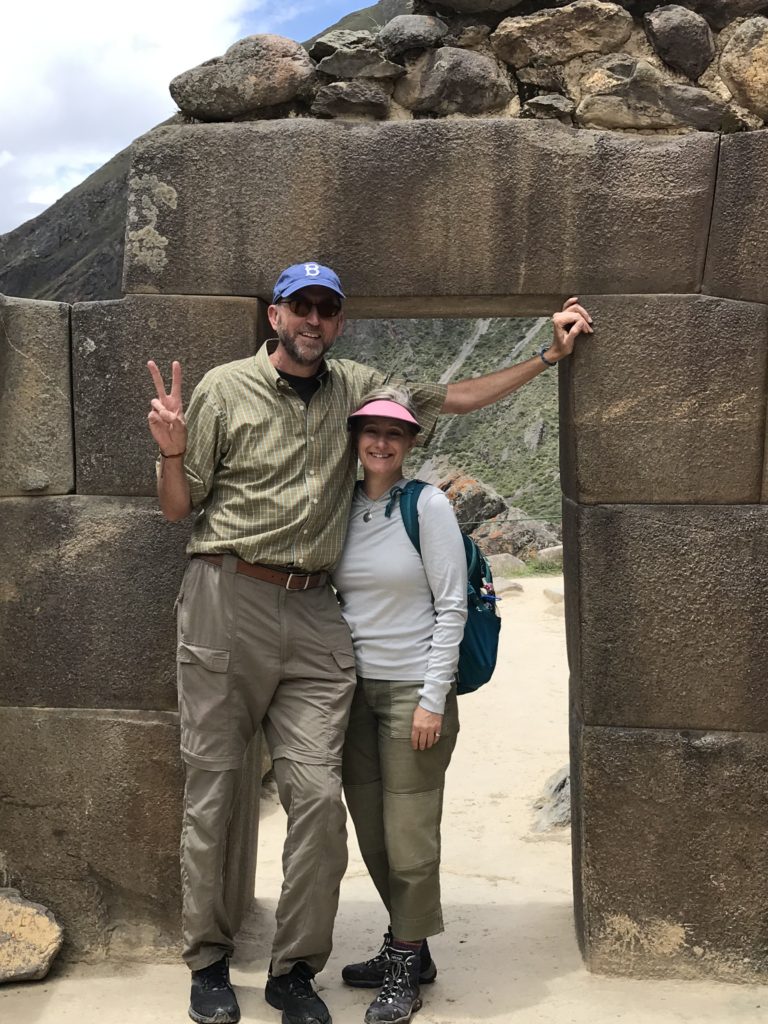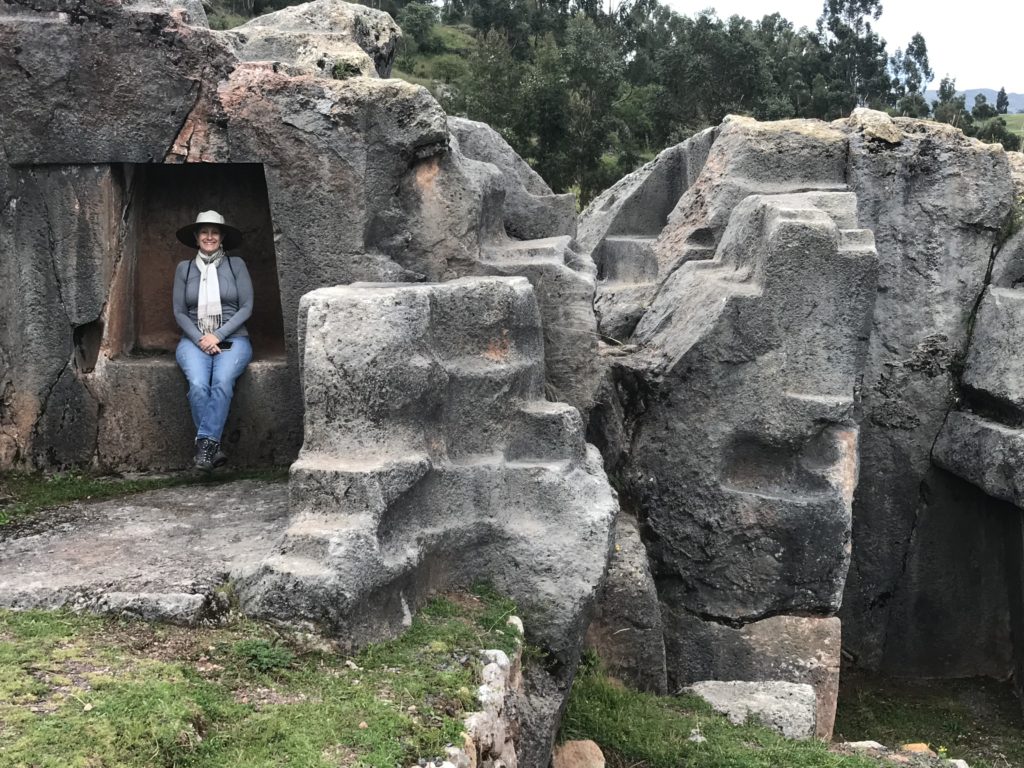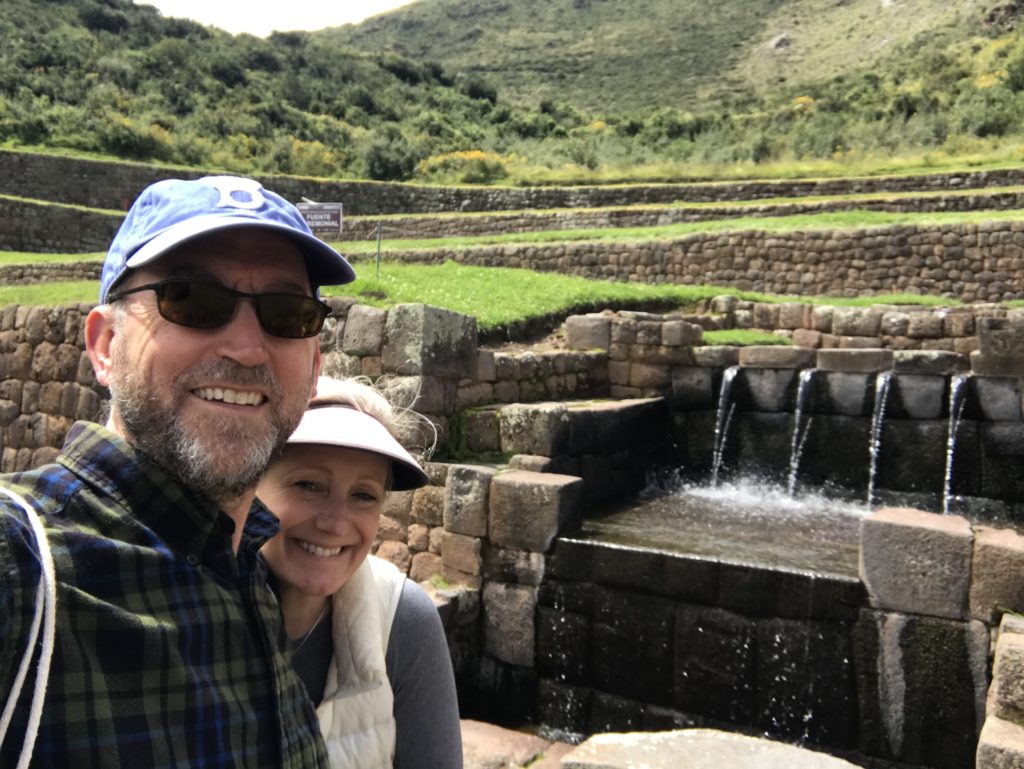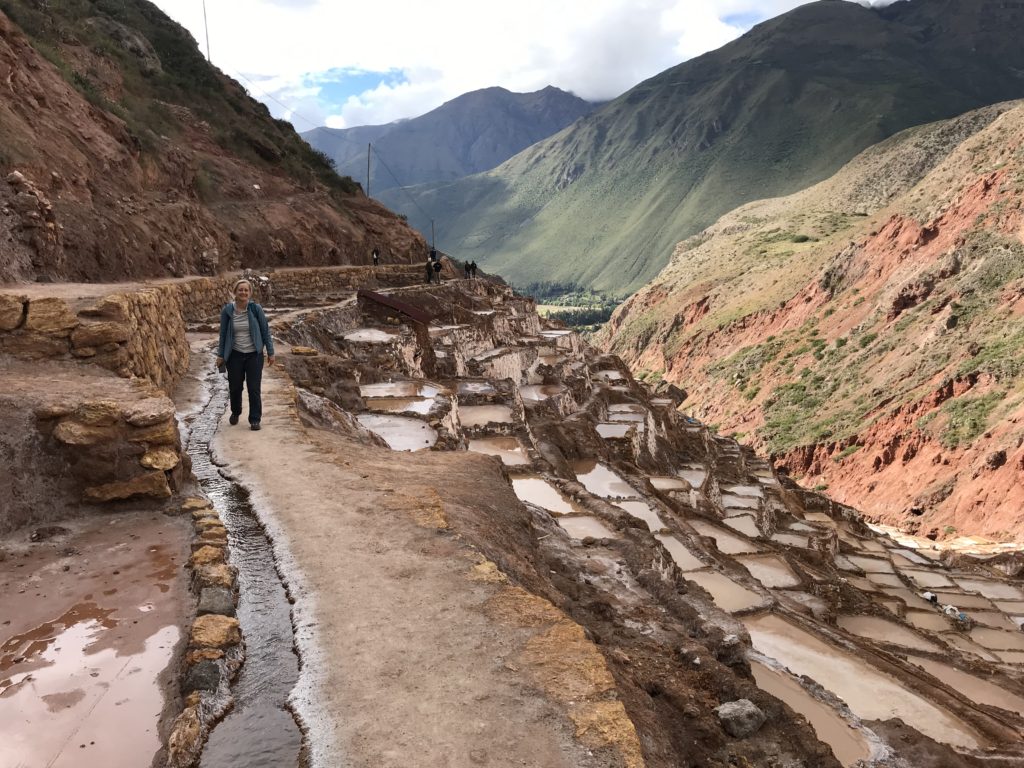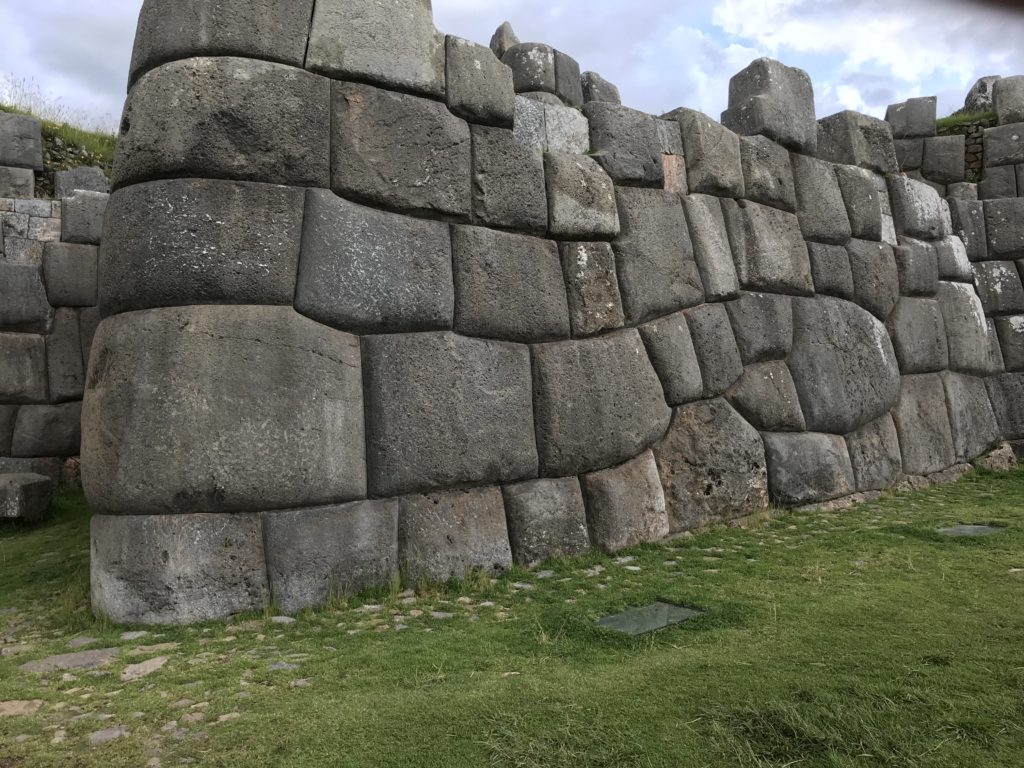
The Incans were prolific builders and were masters at building things of stone that would last. They built roads, temples, palaces, fortifications, and terraces on top of prominent mountains in the Andes. The amazing aspect of the structures is the precision stonework that has lasted for over 500 years and shows minimal signs of decay. They didn’t use mortar or concrete between the stones and built them to resist earthquakes and water erosion so that they last.
Many of the stone, Incan foundations can still be seen in Cusco. Most of the buildings have been destroyed, but the foundations made of tons of stones still exist. Many of the walking alleys in the old town are lined with amazing boulders that are stacked on top of each other like sardines. The stones are composed of hard rocks like granite or andesite and are custom carved to fit the surrounding stones. Custom building each stone must have taken patience and hard work that is very uncommon anymore.
Many of the ruins are located in the mountains above Cusco and in the Sacred Valley. The Sacred Valley is a gorge carved out of the Andes by the Urubamba River. The gorge is spectacularly deep and over sixty miles long between Pisac to Machu Picchu. Everyone knows about Machu Picchu and the dramatic ridge that it sits on. We are going to backpack their starting May 2nd as the climax of our time in Peru. I’m going to tell you about some of the other ruins that we’ve seen now.
To see the ruins in the mountains above Pisac, we had to buy one ticket for over $40 that got us into sixteen ruins or museums. Being the spendthrifts that Amy and I are, we decided to get our money’s worth and go to all sixteen sites. Here is the list of some of the worst and best:
Worst – Centro Cusco De Arte Nativo – Native dancers twisted back and forth to make their skirts go up and down for an hour. It was very repetitive with similar costumes and weak dancing. I saw better dancing and better costumes on the streets of Cusco.
Museo Historico Regional – This historic museum had broken pots and arrowheads from pre-Incan times. They also have a few dioramas that look like a high schoolers made.
Puka Pukara – Some old, overgrown Incan walls that were prominent on a little ridge. Skip this one.
Moray – The Incans built this jewel of a site around a sinkhole – basically a lake that drains underground through some caverns. The Incans filled the caverns with rocks and then made a flat, circular terrace on top of it. They built concentric terraces around the bottom of the sinkhole that climb up the ridge. See the pictures for a better explanation.
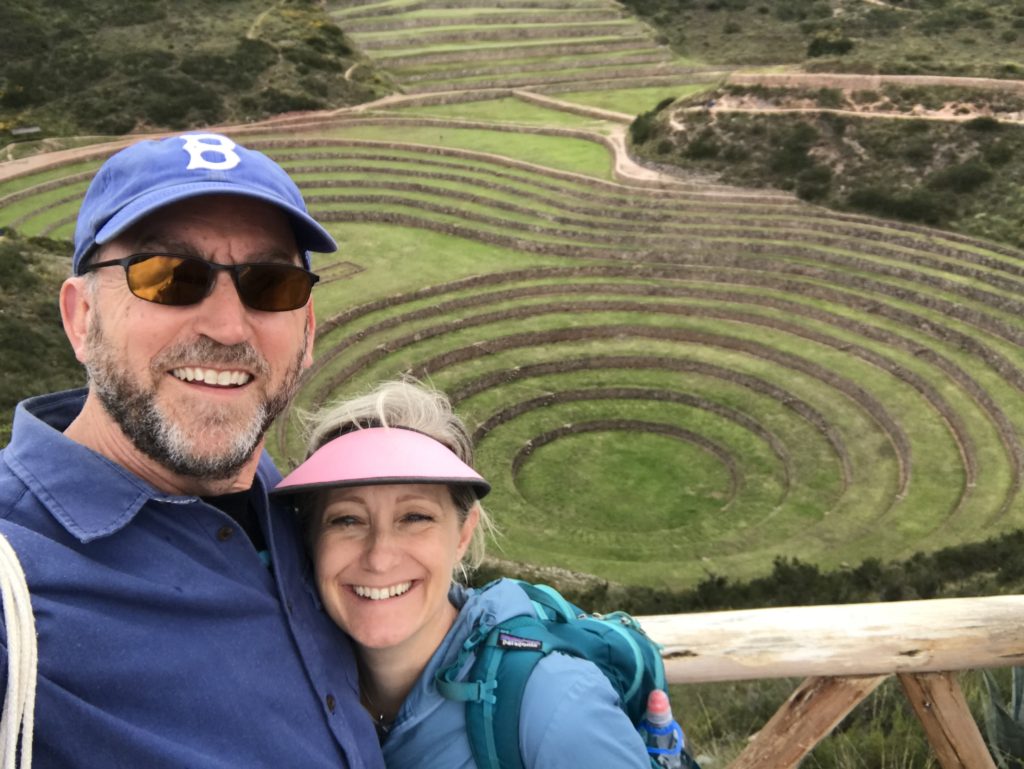
My favorite tour guide/author Peter Frost reports that crops were not grown on the terraces because the soil wasn’t good and there wasn’t irrigation to the site. He thinks the Inca rulers probably built this on a whim to celebrate the inverted mountain that the sinkhole made. The Incans seemed to direct many things like this to make sites sacred and interesting. They worshipped many beautiful places with rockwork and buildings.

Pisaq or Pisac Ruins – This ruin is extensive and we had to hike for over 2 miles from the top to the bottom. The ruins overlook the Sacred Valley and the temples have exquisite stonework and running water.
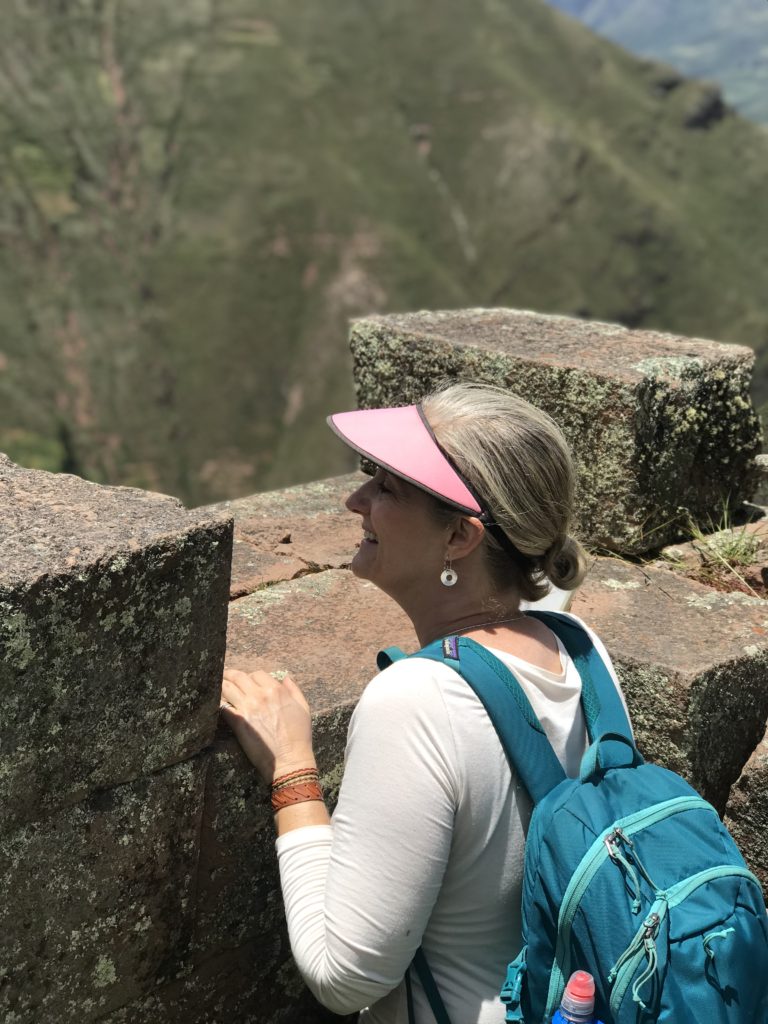
Ollantaytambo – This ruin was mainly a fortification and is the location where the Incans actually repelled the Spanish in a battle. The Spanish were on their horses and they flooded the roads leading into the town so that the calvary got bogged down and could be shot with arrows. The site also has some storehouses with thatched roofs so that I could see what the old buildings looked like when they were in use.
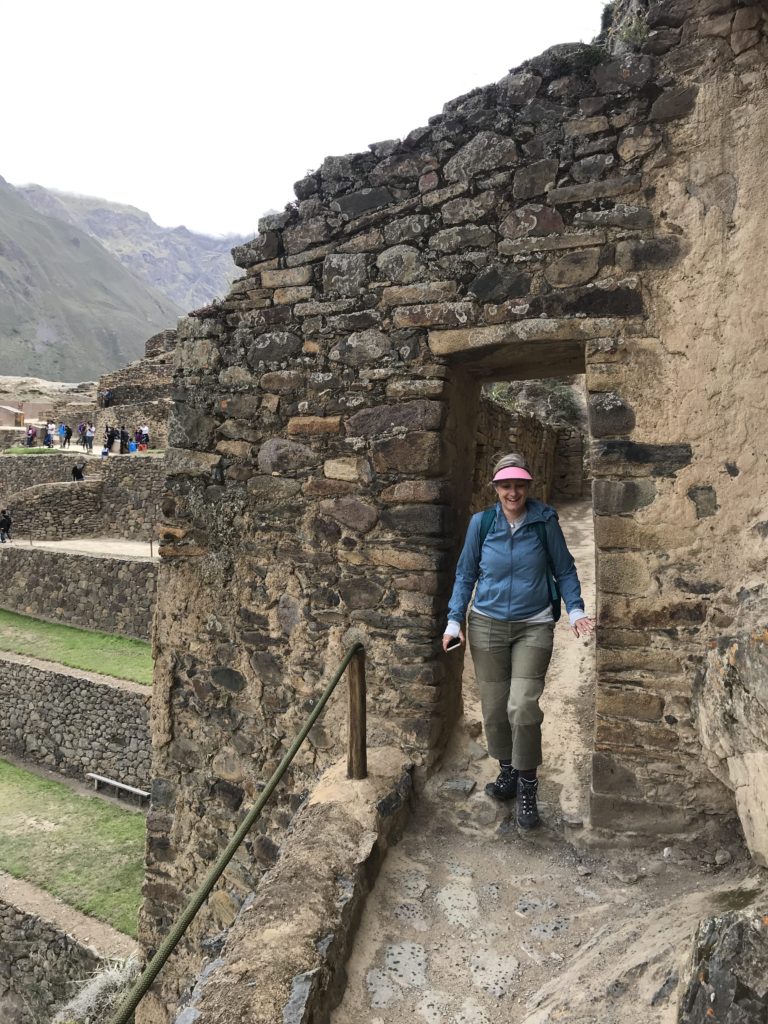
Saqsaywaman – This site, that is roughly pronounced “Sexy woman”, overlooks Cusco and has some of the most massive stone works I’ve seen yet. Only 20% of the original site is left, but it is still impressive. The largest stone is 28 feet high and weighs 361 tons! It seems like an impossible task to work with such stones.

One rebellion against the Spaniards was headquartered here and it tuned into the site of a major battle. I read a few accounts and the most dramatic said that about fifty Spanish Calvary killed about 1,500 Incan soldiers. It seems more like a massacre where the Spanish were rather invincible in their armor and weaponry. The dead were not buried for a long time and many Andean Condors came and ate the dead bodies. The Spanish made the Cusco coat of arms with 8 condors around an Incan tower to commemorate the Battle of Saqsaywaman. The coat was used until the 1990s when an indigenous movement replaced it with a feline design.
We saw many more ruins that are on and off the ticket. Check out these pictures and videos to get a feel for some more of the Incan remnants.
